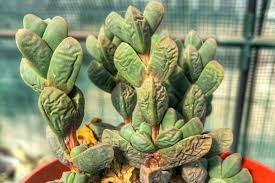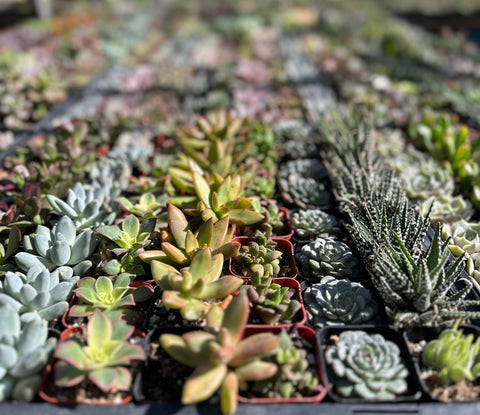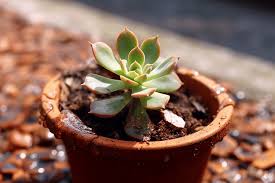
Succulents are renowned for their resilience and ability to thrive in harsh conditions. However, even these hardy plants can suffer from neglect, particularly under-watering. In this guide, we'll explore the signs of under-watering in succulents and provide comprehensive strategies for rehabilitating them to health.
Understanding Under-watered Succulents:
-
Signs of Under-watering:
- Wrinkled or shriveled leaves: Succulents store water in their leaves, so when they lack water, the leaves will start to shrink and wrinkle.
- Yellowing or browning leaves: Under-watered succulents may develop yellow or brown patches on their leaves, indicating stress and dehydration.
- Slow growth: Succulents experiencing prolonged under-watering will show stunted growth or may stop growing altogether.
- Leaf drop: In severe cases, underwatered succulents may shed leaves as a survival mechanism to conserve water.
-
Causes of Under-watering:
- Infrequent watering: Succulents require well-draining soil and periodic watering, but many owners make the mistake of watering them too infrequently because they don't know how often should water succulents.
- Improper drainage: Poor drainage can lead to waterlogged soil, which suffocates succulent roots and prevents them from accessing oxygen.
- Environmental factors: High temperatures, low humidity, and excessive sunlight can increase water loss through evaporation, exacerbating under-watering.
Rehabilitating Under-watered

Succulents:
-
Assessment and Diagnosis:
- Inspect the plant: Examine the succulent for signs of underwatering, such as wrinkled leaves and dry soil.
- Check the roots: Gently remove the succulent from its pot and inspect the roots for signs of rot or dehydration.
- Assess the growing conditions: Evaluate factors such as light exposure, temperature, and humidity to determine if environmental factors contribute to underwatering.
-
Watering Techniques:
- Gradual rehydration: Avoid the temptation to overwater a dehydrated succulent, as this can lead to root rot. Instead, gradually reintroduce water over several days to prevent shock.
- Bottom watering: Place the potted succulent in a shallow tray of water and allow the soil to absorb moisture from the bottom up, ensuring thorough hydration without saturating the soil.
- Adjust watering frequency: Develop a watering schedule based on the specific needs of the succulent species, taking into account factors such as seasonality and environmental conditions.
-
Soil and Pot Considerations:
- Well-draining soil: Repot the succulent in a mixture of well-draining soil, such as cactus mix or sandy loam, to prevent waterlogged conditions. If you know whether cactus soil is good for succulents or not, you can use it properly?
- Proper pot size: Choose a pot with adequate drainage holes and a size proportional to the succulent's root system, avoiding containers that are too large and retain excess moisture.
-
Environmental Optimization:
- Light exposure: Place the succulent in a location with bright, indirect sunlight to promote healthy growth without risking sunburn or heat stress.
- Humidity control: Increase humidity levels around the succulent by placing a shallow tray of water filled with pebbles beneath the pot or using a humidifier in dry indoor environments.

Maintenance and Prevention:
- Observational care: Regularly inspect the succulent for signs of dehydration or overwatering, adjusting watering frequency and environmental conditions as needed.
- Seasonal adjustments: Adapt care routines to seasonal changes in light, temperature, and humidity, recognizing that succulents may require less frequent watering during periods of dormancy.
- Education and awareness: Educate yourself and others about the unique needs of succulents, emphasizing the importance of proper watering techniques and environmental considerations for their health and longevity.

Conclusion: Rehabilitating under-watered succulents requires patience, observation, and a thoughtful approach to watering and environmental management. By understanding the signs of under-watering, implementing targeted rehabilitation strategies, and adopting proactive maintenance practices, you can help your succulents thrive under pressure and reclaim their vibrant beauty. Remember, with the right care and attention, even the most neglected succulents can bounce back and flourish once again.

